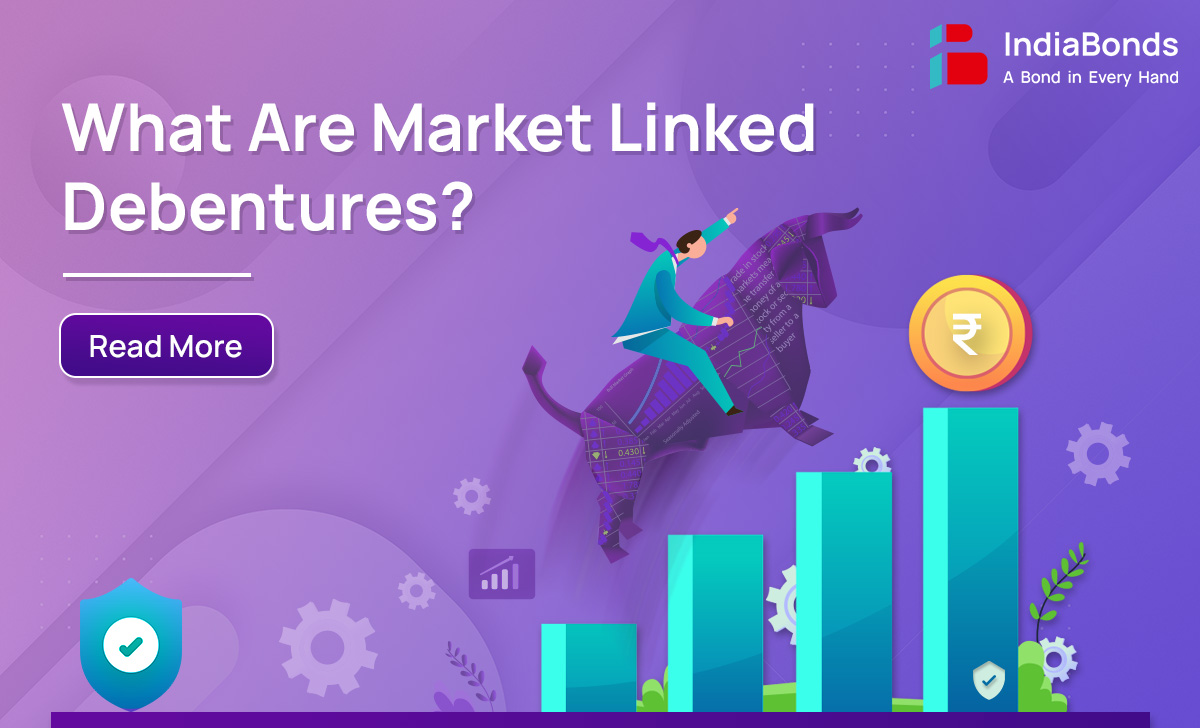
There are various investment avenues in the fixed-income segment and one popular investment option among them are Bond or Debentures.
Debentures are issued by companies to raise funds that could be used for either capital expansion or working capital needs. Debentures usually have a coupon payment. It means that as an investor you will get an interest payment (also called coupon payment) on a periodical basis. The major advantage of investing in debentures is that it is a safer investment option and less volatile as compared to equity shares. It also gives a steady income.
There are various types of debentures: convertible, non-convertible, zero-coupon, perpetual, and market-linked. In this article, we will cover various aspects of market-linked debentures, also called MLDs.
Let’s understand the meaning of Market-linked debentures. These are a debt instrument whose returns are linked to either a particular tradable security or market index such as Government Securities (G-Sec), Nifty, Gold, INR etc. These instruments are considered hybrid as they have the features of both simple debt security and derivatives.
The movement or the returns of a market-linked debenture is dependent on the performance of the underlying index which it follows. MLDs are available in various tenors, commonly ranging from 1 to 5 years.
Market Linked Debentures are of two types:
Let’s take an example to understand them better.
A company issues an MLD with a coupon of 9% p.a. with a tenure of 3 years. However, it has a warning that a 9% coupon will only be given if the underlying index performs more than 10%.
Case 1: If the underlying index does not perform more than 10%, only the principal will be returned.
Case 2: If the underlying index performs more than 10%, the principal amount along with the coupon will be returned.
The above example, explains the working of principal-protected MLD. It has an inbuilt feature of capital protection, regardless of existing market situations. This is principal protected MLD.
Non- Principal protected MLD – A non-principal-protected MLD does not have any capital protection feature. The returns on this MLD are higher as it involves higher risks.
The following are the features of a market-linked debenture:




As the name suggests, when the markets are on the rise, Market-linked debentures have the potential for much higher returns as compared to other fixed-income instruments like fixed deposits.
Market-linked debentures are traded in the stock markets and have their share of risks. However, their capital protection feature ensures that in the event of a market crash your principal amount is protected.
MLDs offer the best of both worlds in terms of high returns and capital protection among all the traditional asset classes. A higher return with principal protection is their unique advantage.
Here are the risks associated with market-linked debentures:
The financial stability of the issuer of market-linked debentures is a risk associated with the instrument. Even though most of the market-linked debentures come with a feature of principal protection, you may still incur a loss of capital in the event of the issuer becoming delinquent. However, this is combatted with the help of credit ratings which investors can refer to understand the overall health of the issuer.
If investors exit before maturity, there is a possibility where they can lose potential returns. Investors prefer to hold the bond till maturity as it is more beneficial for them. Therefore, they are not regularly traded in the market.
For portfolio diversification purposes, MLDs make a good investment proposition if one can hold it till maturity. Despite the associated risks that Market Linked Debentures have, they are a good investment option to boost your portfolio due to their tax efficiency and principal protection features.
The key to success in investing in market-linked debenture is an in-depth analytical study of the issuing organization. It will help you in your decision about which funds to invest in.
Market-linked debentures are a debt instrument whose returns are linked to either a particular tradable security or market index such as G-Sec, Nifty, Gold index etc.
This instrument should be used only for diversification purposes and best practices usually suggest to not have more than 10% of your overall portfolio allocated to MLDs.
A market-linked debenture has the potential to give you a return at a much higher rate of interest than other traditional instruments.
Usually, it ranges from 1 to 5 years, and a lot of them are available in the market.
Invest in Market Linked Debentures online easily through IndiaBonds. Sign up and freely browse through all types of Bonds. Complete your KYC in less than 3 minutes which is paperless and requires no uploads. Select the bond of your choice and invest and pay online. In case you need help, our bond managers would guide you through the process of investing.
Disclaimer: Investments in debt securities/ municipal debt securities/ securitised debt instruments are subject to risks including delay and/ or default in payment. Read all the offer related documents carefully.